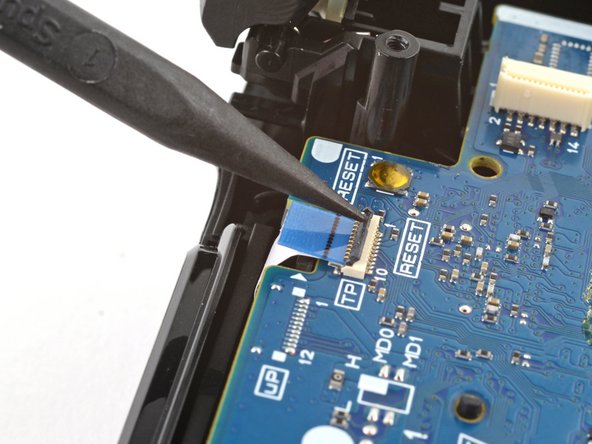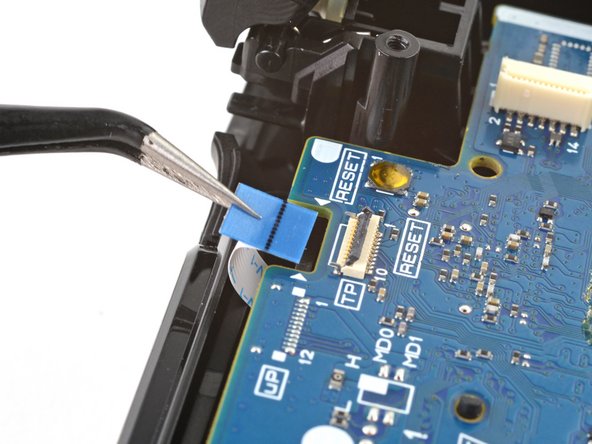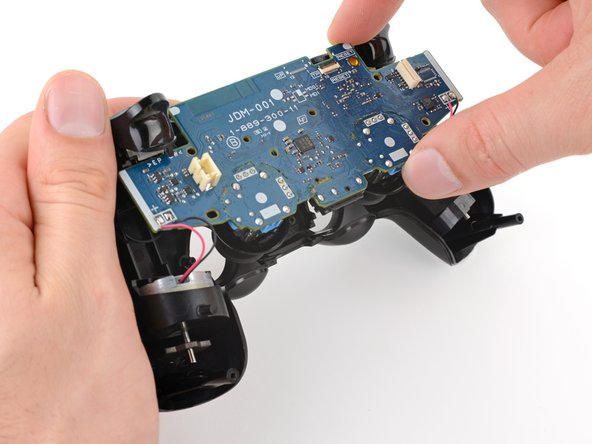DualShock 4 Right Analog Stick Replacement
ID: 27763
Description: Here is a DualShock 4 controller that had a...
Steps:
- Check the model number on the back of your controller. This guide was written using model CUH-ZCT1U. If you have another model, the guide procedure and replacement parts may differ slightly.
- If you have the second generation DualShock 4, model CUH-ZCT2U, use these guides.
- If you need to stabilize your controller during this repair, lay it on a soft surface such as a microfiber cloth.
- Use a Phillips screwdriver to remove the four 6.4 mm-long screws securing the rear case.
- Use an opening pick to pry each corner of the L1 button from the front case.
- Cover the button to prevent it from ejecting out of your workspace.
- Remove the button.
- Use your opening pick to pry and remove the R1 button, just as you did for the L1 button.
- Six plastic clips secure the rear case to the front case. The next four steps demonstrate how to release these clips before you can open the controller.
- Insert your opening pick at a downward angle between the front case and rear case, halfway between the handle and the action buttons.
- Slide your pick toward the handle and pry up to release the first clip.
- Repeat this procedure on the other side of the controller to release the second clip.
- Two more clips secure the rear case near the extension port and the headphone jack.
- Insert your opening pick between the front case and rear case at either side of the ports.
- Twist your pick to unclip this section of the rear case from the front case.
- If the rear case feels stuck, insert and twist your pick from different angles.
- Don't open the controller yet, as it's still held together by two very delicate clips near the triggers.
- The final two clips are very delicate, and must be disengaged from inside the controller. If you break them, don't worry—it won't affect this repair or your controllers functionality.
- Locate the clips by looking through the gap above the R2 or L2 buttons.
- Insert the point of a spudger through the gap above the R2 button and push the retaining clip outward.
- While pushing the clip outward, slowly pull the rear case away from the front case until you feel them separate.
- Don't fully open the controller until each of the R2 and L2 clips have been disengaged.
- Repeat this procedure for the clip near the L2 button.
- Press the R2 button and slide the rear case over it.
- Press the L2 button and slide the rear case over it.
- Flip the rear case over the top of the controller and lay it down, being careful not to strain the interconnect cable.
- Use tweezers or your fingers to remove the interconnect cable by pulling its blue pull tab straight out of the socket.
- During reassembly, reconnect the cable with its blue pull tab facing the outside of the controller.
- Use tweezers or your fingers to grab and disconnect the head of the battery cable from the motherboard.
- Only pull on the head of the connector—don't pull on the cable itself.
- Remove the battery.
- Grab and remove the reset button extension from its recess in the battery bracket.
- Locate the two clips securing the battery bracket to the motherboard.
- Insert the point of your spudger into the opening behind the right bracket clip.
- Depress the clip to disengage it from the motherboard.
- Lift up the right edge of the battery bracket.
- Insert the point of your spudger in the opening behind the left bracket clip.
- Depress the clip to disengage it from the motherboard.
- Remove the battery bracket.
- Use the point of your spudger to flip up the locking flap securing the touch pad cable ZIF connector.
- Use tweezers or your fingers to disconnect the cable using its blue pull tab.
- Use your Phillips screwdriver to remove the 6.4 mm screw securing the motherboard.
- Be careful not to strain the vibration motor cables. Follow this guide to re-solder the vibration motors if they break off the motherboard.
- Lift the motherboard from the midframe.
- Guide the analog stick covers through their cutouts in the front case.
- Flip the motherboard over the bottom of the controller, leaving the vibration motor cables attached.
- These are the solder connections that will need to be desoldered. Since the board is upside down, left will become right.
- Use a desoldering wick and flux to melt and remove the solder
- This may take a bit of practice since all the solder will have to be removed. It does help to pull a bit on the joystick while melting the solder and using the wick.
- Once all the contacts are desoldered, the old joystick can be removed.
- Check that all the holes are cleared of old solder. Hypodermic needles as well as very small drill bits can be used to clear the holes.
- Insert the new joystick into the circuit board. Make sure it is properly seated and that all the contacts line up with the holes in the circuit board.
- Double check to make sure the joystick is seated properly.
- Solder all the contacts to the board.
- Here is the board after the repair. All that is left is to clean off the old flux with some isopropyl alcohol.




















































